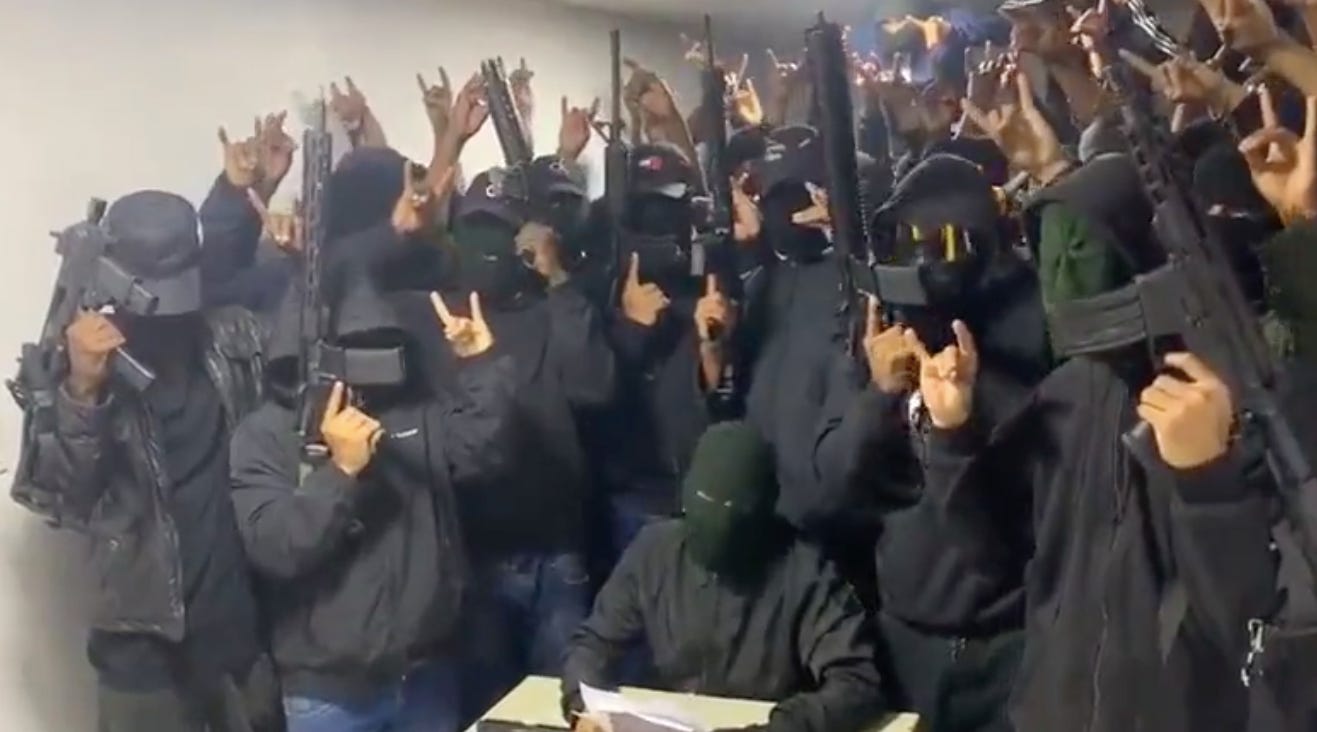Criminal organizations in Ecuador are entering a phase of direct confrontation with the state, according to the Organized Crime Observatory (OECO). This shift has led to a new state of emergency aimed at strengthening efforts to combat gangs.
Attacks on prosecutors, the murders of prison officials, an increase in police homicides, and confrontations between criminals and military forces all point to what could be a new phase of organized crime in Ecuador: criminal insurgency.
A New Phase of Confrontation
Renato Rivera, director of the Ecuadorian Observatory of Organized Crime (OECO), explains that criminal organizations are no longer just fighting among themselves. They now feel capable of directly confronting the state.
In fact, the new state of emergency decree, which covers six provinces and two cantons, acknowledges signs of this new phase. It points out that armed groups are vying for control of state functions in certain areas.
The decree warns that if criminal activity in these provinces is not curbed, these organizations could grow to a point where they become uncontrollable. This type of insurgency is the most significant seen in Latin America, with similar situations previously documented in Colombia and Mexico.
While Ecuador’s insurgency hasn’t yet reached the levels seen in those countries, the warning signs are clear, according to a specialist in the economics of organized crime and international security.
“We are in the early stages of this insurgency, where criminal organizations aim to destabilize the state to ensure territorial control and improve the efficiency of their illegal markets—such as drug trafficking, extortion, and illegal mining,” Rivera said.
What Is Criminal Insurgency?
A criminal insurgency involves different forms of confrontation between criminal groups and state institutions. The ultimate goal is to gain autonomy and economic control over territories to advance illicit activities. This is a progressive escalation that typically unfolds in four levels, according to academic research.
Four Levels of Criminal Insurgency:
- Local Control and Criminal Enclaves: At this stage, criminal groups establish enclaves in marginalized neighborhoods or areas within cities.
- Territorial Disputes: Gangs and criminal bands use armed means to dispute control of territories.
- Violent Uprising Against the State: Criminal organizations actively combat state forces to ensure their illicit operations continue unchallenged.
- Criminal Domination of the State: In this final stage, criminal groups achieve complete control over state structures, severely weakening the security forces through violence and corruption, effectively creating a narco-state.
Where Is Ecuador Now?
Ecuador has already moved beyond the first two stages, as defined by American academic John P. Sullivan. These stages involve the creation of criminal enclaves and initial territorial disputes, which have been observed in areas like Durán and Nueva Prosperina.
The country is now transitioning into the third level, where criminal groups are directly confronting state authorities. The takeover of the TC television channel in January 2024 marked a turning point in this transition, though the Observatory has been documenting this shift since 2023. Recent acts of terrorism aim to destabilize the state further.
Rising Violence and Risk
Between January and September 2024, 26 police officers and one soldier were murdered, signaling that the threshold of simple intimidation has been crossed. Armed clashes with security forces have occurred in areas like Ponce Enríquez, and prison workers have been targeted, with six attacks and three deaths reported in September alone.
These developments heighten the risk for public servants and affect public safety and the exercise of rights. The state has responded with a night curfew in 19 cantons across four provinces and in the rural parish of Tenguel in Guayaquil.
Beware of Los Lobos and Los Tiguerones
Rivera highlights two criminal organizations that are particularly concerning in this context: Los Lobos and Los Tiguerones. These groups are aggressively seeking to expand their control over illicit markets, using military tactics and direct combat with state forces.
What Lies Ahead?
According to Rivera, Ecuador’s situation is more comparable to Mexico than Colombia. One risk is the criminal imposition of curfews, which could extend across entire cities.
Criminal curfews have already been reported in Esmeraldas and, last year, in cantons like Mocache, Buena Fe, and Valencia in Los Ríos province.
If left unchecked, Ecuador could experience a complete loss of control in entire regions, similar to what has been seen in Sinaloa, Mexico, during the final stage of insurgency.
States of Emergency Are Not Enough
Rivera warns that constant states of emergency and curfews are not a long-term solution. While these measures initially reduced violence by 18% in the first half of the year, more comprehensive actions are needed.
He criticizes the over-reliance on the armed forces, saying it indicates institutional weakness. Key areas, such as the Financial Analysis Unit (UAFE) and the purge of officials co-opted by criminal groups, are not being adequately addressed. In 2023, the UAFE investigated just 20 Suspicious Operation Reports—far too few to combat money laundering and weaken organized crime’s economic power.
Additionally, the expansion of the state of emergency to more provinces suggests that the problem is spreading rather than being contained. Rivera also points out that including Quito in the state of emergency may be more about political calculations than actual security needs, especially in the run-up to elections.
While there has been an increase in homicides linked to territorial disputes in Quito, overall violence has decreased compared to 2023.
“In Quito, the exceptional situation isn’t justified in terms of violence,” Rivera said. “But there could be political motives behind the decision, especially in light of recent blackouts and fires, and with elections on the horizon.”


0 Comments